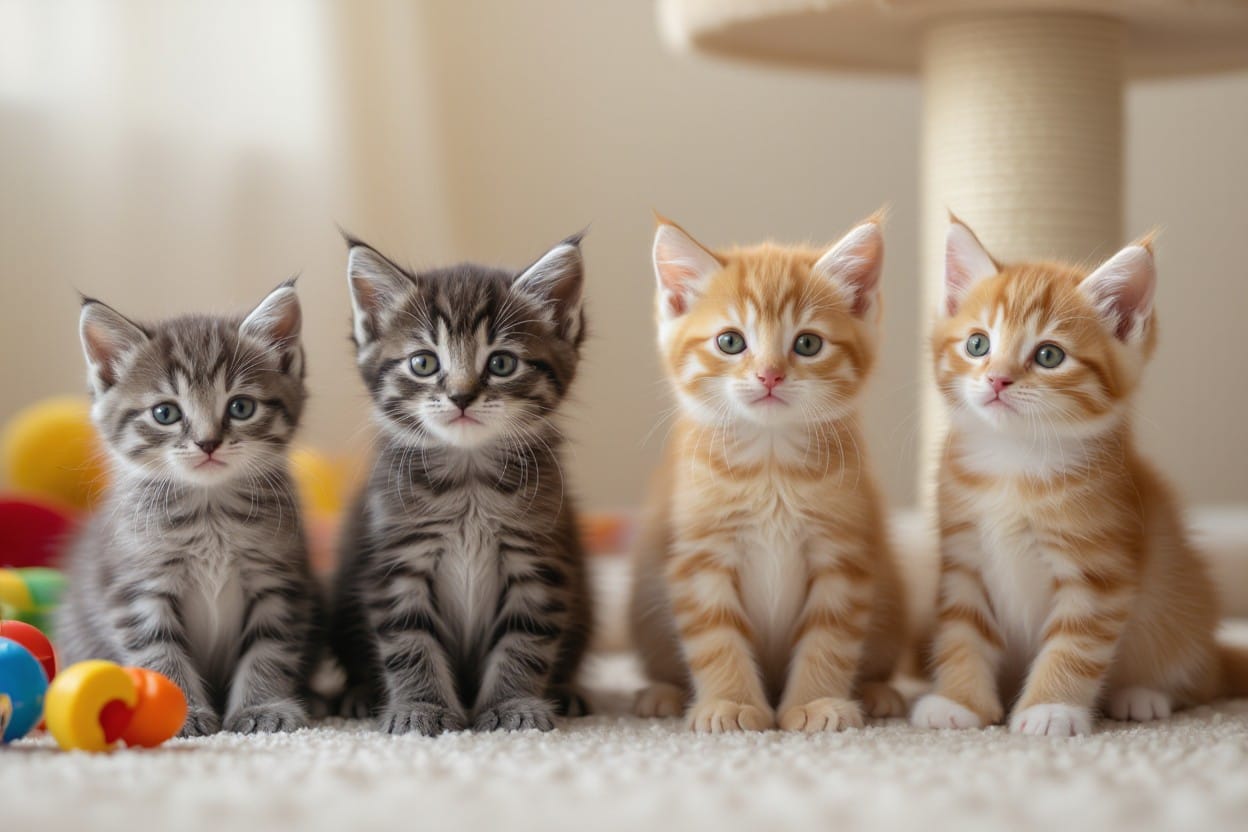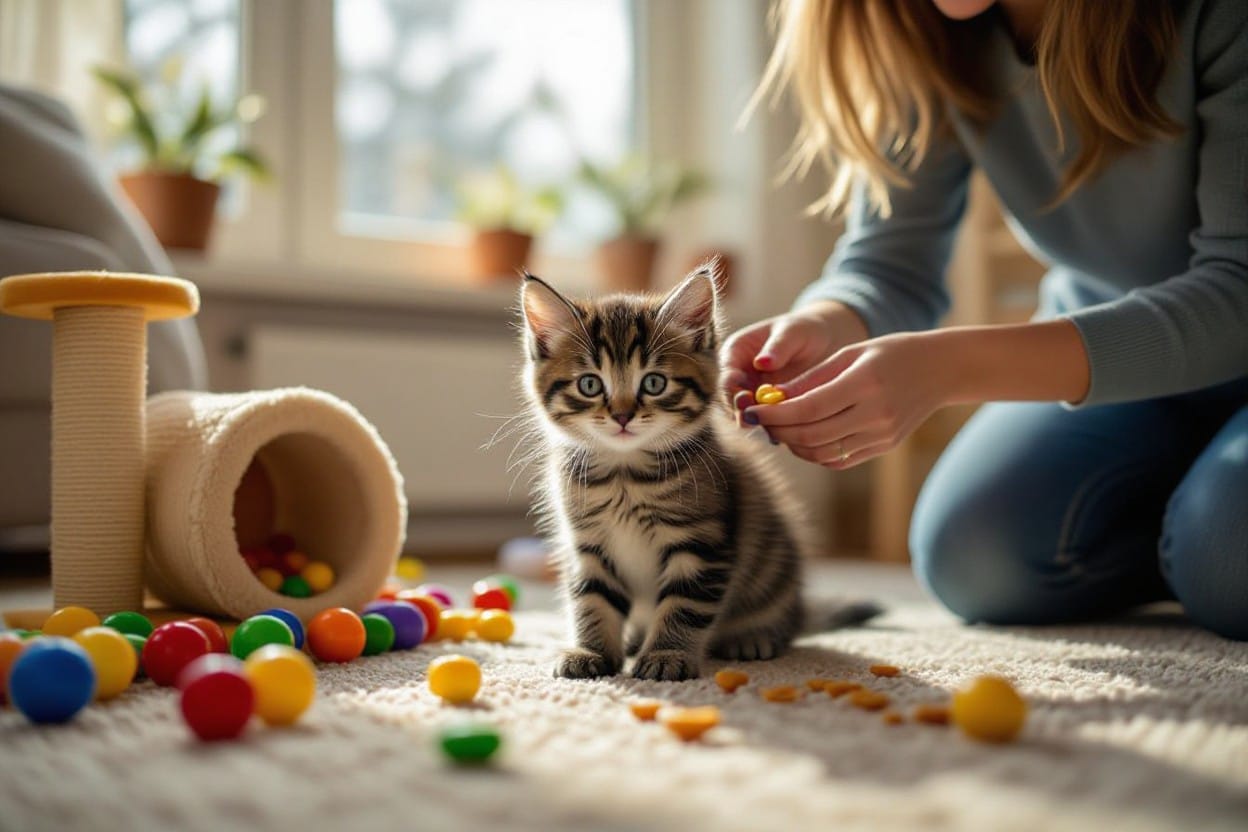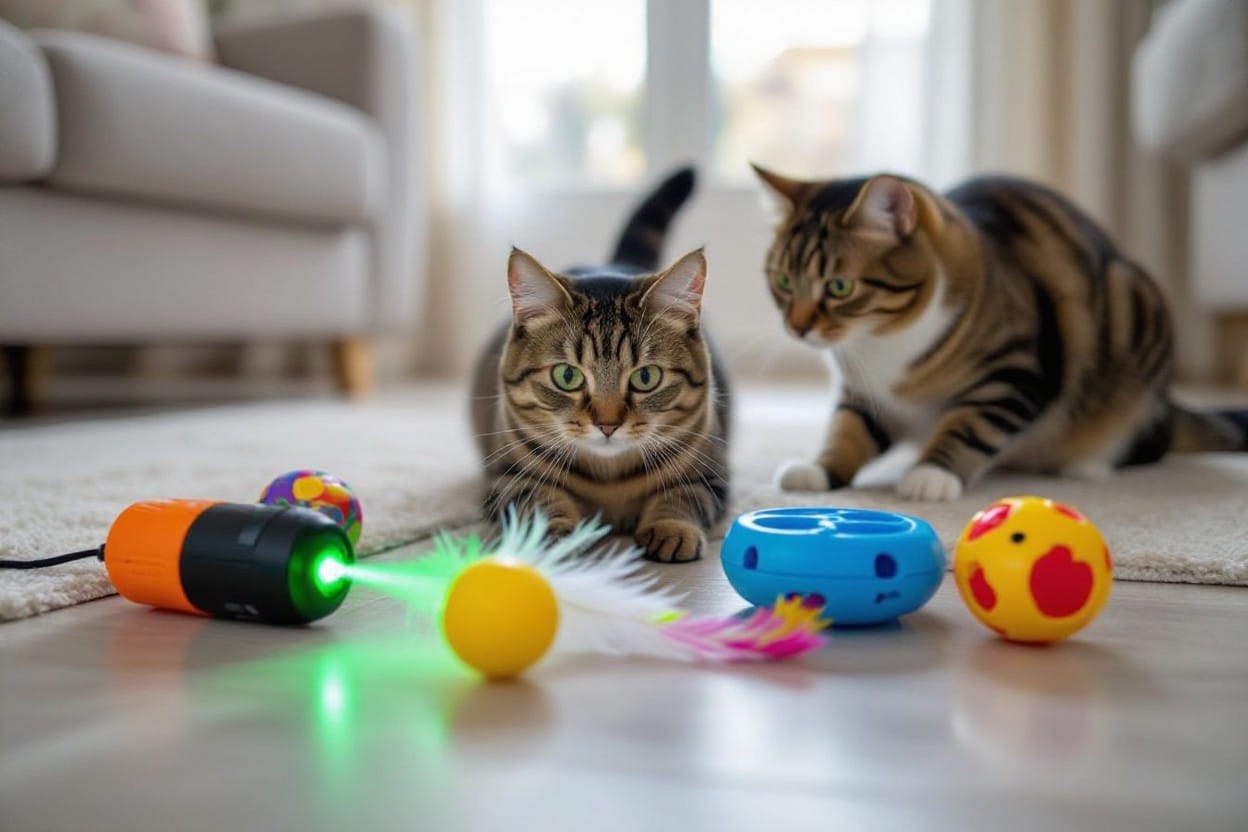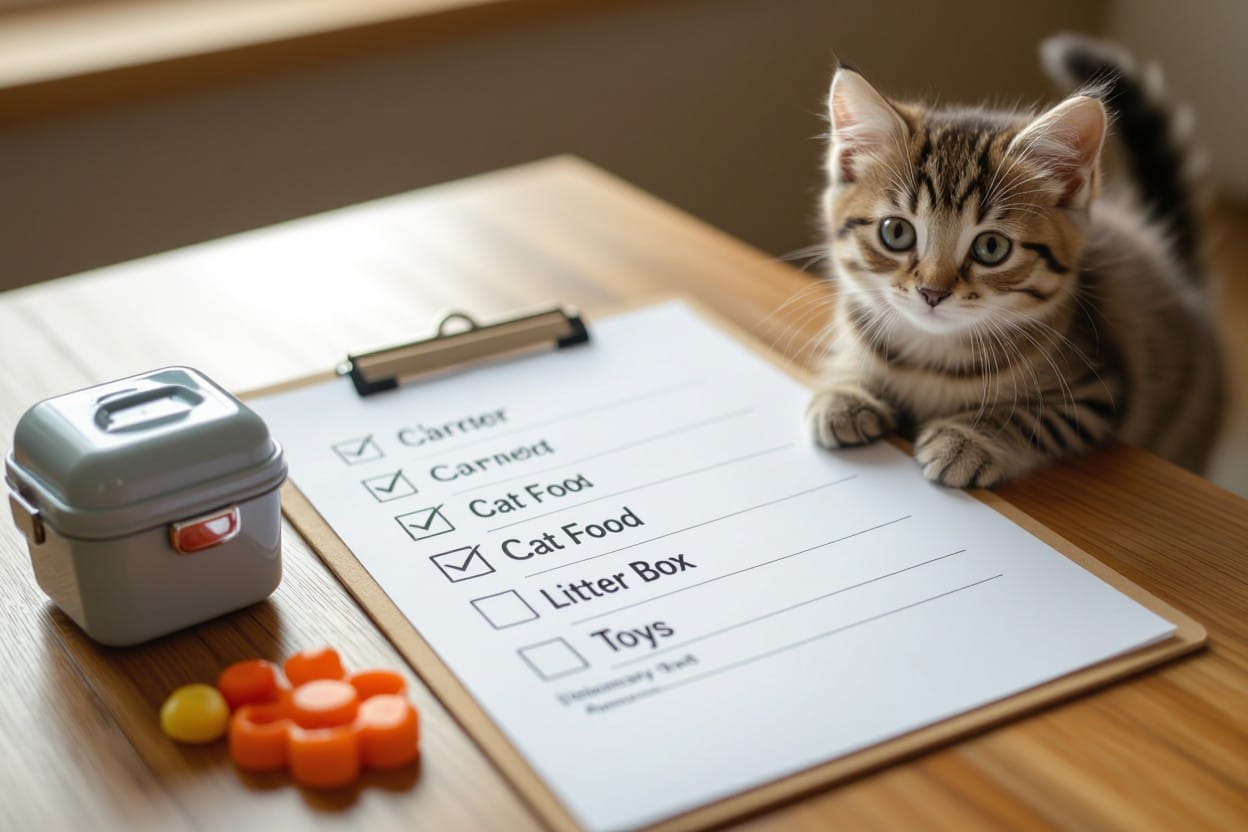Most kitten owners understand the importance of playtime for their furry friends, but did you know that playtime goes beyond just fun and games? In this comprehensive guide, we will explore the many benefits of playtime for kittens and how it contributes to their overall well-being and development.
In this guide, we will outline the physical, mental, and emotional benefits that playtime offers kittens, as well as provide tips on how to maximize play sessions for optimal results. So, if you want to ensure your kitten grows up happy, healthy, and well-adjusted, read on to discover the wonders of playtime for kittens.
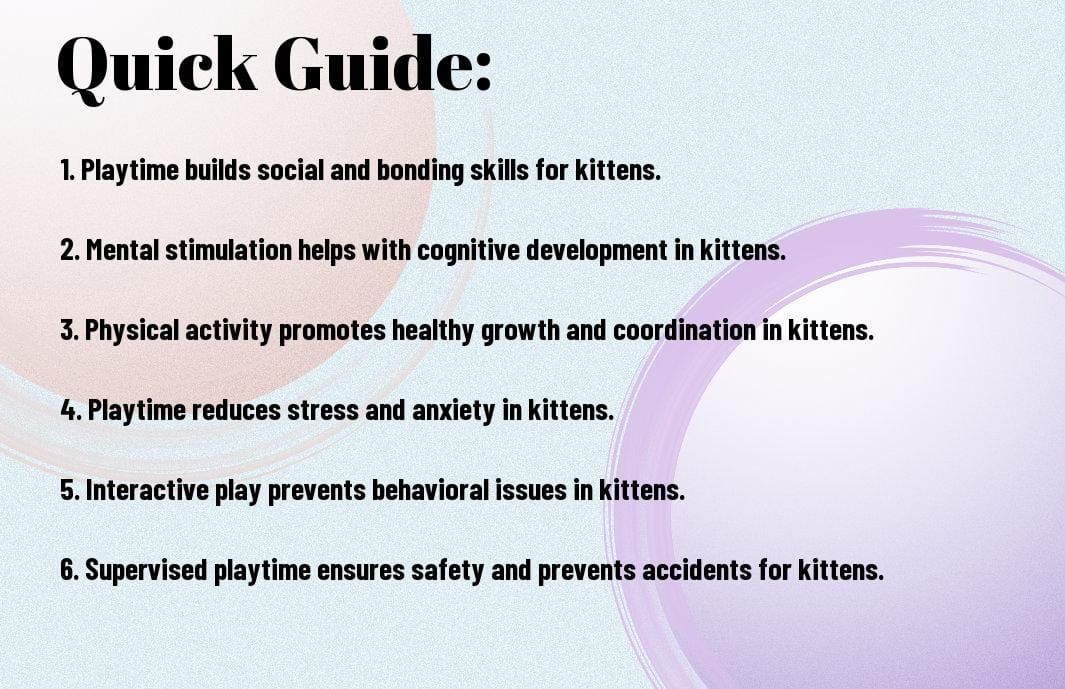

Understanding the Types of Kitten Play
Assuming you are a new kitten owner or simply want to enrich your feline companion’s playtime, it is important to understand the different types of play behaviors kittens exhibit. Recognizing these behaviors can help you tailor their play sessions to meet their specific needs.
| 1. Exploring Predatory Play Behavior | 2. Social Play and Its Benefits |
|---|---|
| Kitten play, including stalking, pouncing, and chasing, mimics hunting behavior in the wild. This type of play is crucial for developing their predatory instincts and honing their physical skills. Interactive toys that simulate prey can engage your kitten in this type of play, providing both mental stimulation and physical exercise. | Clearly, social play is important for kittens to learn important communication skills and establish hierarchies within their social group. Play fighting with littermates or humans helps them develop coordination, strength, and social bonds. Encouraging social play can also prevent behavioral issues and promote healthy social development in kittens. |
| Kittens may exhibit predatory play behavior as early as a few weeks old, and it is important for their development. Providing appropriate outlets for this behavior can prevent them from engaging in destructive behaviors or becoming overly aggressive in adulthood. | |
| Interactive toys such as feather wands or laser pointers can satisfy a kitten’s natural hunting instincts in a safe and controlled environment. Through predatory play, kittens can release excess energy, improve their physical coordination, and engage in mentally stimulating activities. | |
| Observing your kitten’s predatory play behavior can give you valuable insights into their personality, preferences, and energy levels. By engaging in play sessions that cater to their natural instincts, you can strengthen the bond with your kitten and provide them with enriching experiences. |
Exploring Predatory Play Behavior
Kitten play, including stalking, pouncing, and chasing, mimics hunting behavior in the wild. This type of play is crucial for developing their predatory instincts and honing their physical skills. Interactive toys that simulate prey can engage your kitten in this type of play, providing both mental stimulation and physical exercise.
With their innate drive to hunt and capture prey, kittens engaging in predatory play behavior exhibit bursts of energy and agility. Encouraging this type of play can help satisfy their natural instincts and prevent boredom or excess energy from leading to destructive behaviors.
Social Play and Its Benefits
Clearly, social play is important for kittens to learn important communication skills and establish hierarchies within their social group. Play fighting with littermates or humans helps them develop coordination, strength, and social bonds. Encouraging social play can also prevent behavioral issues and promote healthy social development in kittens.
Understanding the dynamics of social play can help kitten owners create an enriching environment where their pets can thrive socially and emotionally. By providing opportunities for structured social interactions, such as supervised play sessions with other kittens or gentle play with human companions, you can support your kitten’s overall well-being and social development.

Factors to Consider When Engaging with Kittens
It is important to consider various factors when engaging with kittens to ensure that playtime is both enjoyable and beneficial for the little ones. By understanding these key considerations, you can create a safe and stimulating environment that encourages healthy development and bonding with your kitten.
- Assessing Kitten Age and Playfulness
- Tailoring Play to Individual Kitten Personalities
Assessing Kitten Age and Playfulness
You should first assess the age and playfulness of your kitten before engaging in playtime activities. Young kittens have different energy levels and attention spans compared to older cats, so it’s important to tailor your interactions accordingly. Pay attention to your kitten’s behavior cues to determine the best approach for play. Keep in mind, kittens need a balance of active play and rest to prevent overstimulation and exhaustion. This will help you create an engaging play environment that is both enjoyable and beneficial for your kitten’s development.
Tailoring Play to Individual Kitten Personalities
Personalities play a significant role in how kittens interact during playtime. Some kittens may be more adventurous and energetic, while others may be more reserved and shy. It’s important to tailor your play activities to match your kitten’s personality to ensure they feel comfortable and engaged. By observing your kitten’s behavior and preferences, you can create a play routine that suits their individual needs. Plus, by understanding and accommodating your kitten’s unique personality traits, you can build a strong bond based on trust and mutual enjoyment during playtime.
Step-by-Step Guide to Interactive Playtime
Not all playtime is created equal when it comes to kittens. Interactive play is necessary for their mental and physical development. This step-by-step guide will help you engage your kitten in a fun and stimulating playtime routine.
| Setting Up a Safe Play Environment | Engaging Your Kitten with Toys and Games |
| Ensure there are no small objects that your kitten could ingest and that there are no exposed wires or cords that could be hazardous during playtime. | Use a variety of toys such as interactive wands, balls, and puzzle feeders to keep your kitten entertained and engaged. |
Setting Up a Safe Play Environment
Playtime should take place in a designated area where your kitten can play without any potential dangers. Remove any toxic plants, sharp objects, or small items that could be a choking hazard. It’s important to create a safe space where your kitten can freely explore and play without any risks.
Engaging Your Kitten with Toys and Games
Even though kittens have a natural instinct to play, it’s necessary to provide them with the right toys and games to keep them mentally and physically stimulated. Interactive toys that mimic prey-like movements or engage their hunting instincts are particularly beneficial. Rotate different toys to keep playtime exciting and prevent boredom. Regular play sessions also help build a strong bond between you and your kitten.
Plus, always supervise playtime to ensure your kitten remains safe and doesn’t ingest any small parts of toys. Interactive play not only provides physical exercise but also mental stimulation, helping your kitten develop important skills and preventing behavior issues.
Tips for Encouraging Healthy Play Habits
For kittens, playtime is more than just fun – it is necessary for their physical and mental development. As a responsible pet owner, it is important to provide opportunities for your kitten to engage in play that is not only enjoyable but also beneficial for their overall well-being.
Regular Playtime Schedules
Some kittens may be naturally playful, while others may need a little more encouragement. By establishing a regular playtime schedule, you can help your kitten develop a routine and create a bond through interaction. Set aside dedicated time each day to engage in interactive play with your kitten, using toys that encourage physical activity and mental stimulation.
Recognizing the signs of playfulness in your kitten, such as pouncing, chasing, and batting at objects, can help you tailor their playtime sessions to their preferences. Be mindful of not overstimulating your kitten and allow for breaks when needed to prevent exhaustion.
Introducing New Stimuli to Maintain Interest
Schedules should not be limited to the same toys and activities. To prevent boredom and maintain your kitten’s interest in playtime, introduce new stimuli regularly. This can include rotating toys, incorporating interactive games, or creating DIY puzzle feeders to engage your kitten’s curiosity and problem-solving skills.
With a variety of toys and activities, you can keep playtime sessions fresh and exciting for your kitten, encouraging them to stay active and mentally stimulated. Be observant of your kitten’s response to different stimuli and adjust their playtime routine accordingly to ensure they are getting the most out of their play sessions.
The Pros and Cons of Playtime
After getting a new kitten, one of the most enjoyable aspects for both you and your feline friend is playtime. However, there are both advantages and potential drawbacks to consider when it comes to playtime sessions. Let’s break down the pros and cons in the table below:
| Pros | Cons |
| Great exercise for kittens | Potential for overstimulation |
| Strengthens bond between owner and kitten | Risk of accidental scratches or bites |
| Stimulates mental and physical development | Possibility of furniture damage during play |
| Helps prevent obesity and boredom | Time-consuming for busy owners |
Advantages of Structured Kitten Play
Pros of structured kitten play include providing a safe environment for your kitten to expend their energy and develop their natural hunting instincts. Structured play also helps teach boundaries and appropriate play behaviors, setting a foundation for a well-rounded adult cat.
Additonally, structured play sessions can enhance the bond between you and your kitten, creating a deeper connection and mutual understanding. By engaging in playtime regularly, you are not only keeping your kitten physically active but also fostering their social and emotional well-being.
Potential Drawbacks and How to Mitigate Them
An important aspect to consider when it comes to playtime is the potential drawbacks that may arise. To mitigate any negative outcomes, make sure to supervise playtime sessions closely and provide appropriate toys to prevent overstimulation or aggressive behavior.
Structured play helps maintain a healthy balance between fun and safety for your kitten, ensuring that both you and your furry companion can enjoy playtime to the fullest.
Addressing Common Kitten Playtime Issues
Dealing with Overstimulation
All kittens have different energy levels and playtime limits. It is important to pay attention to your kitten’s body language during play to prevent overstimulation. Signs of overstimulation may include dilated pupils, flattened ears, and aggressive behavior. If you notice these signs, it’s crucial to give your kitten a break and allow them to calm down in a quiet space. Providing proper rest between play sessions can help prevent overstimulation and ensure a positive play experience for your kitten.
Managing Aggressive Play Behavior
Assuming your kitten’s aggressive behavior during play is not due to fear or pain, there are effective ways to manage it. One strategy is to redirect their focus to appropriate toys, such as interactive wands or balls, to shift their attention away from biting or scratching. Another tip is to avoid using your hands as playthings, as this can encourage aggressive behavior. Consistent positive reinforcement when your kitten engages in gentle play can also help shape their behavior over time.
With proper guidance and patience, you can address common playtime issues with your kitten and foster a healthy and enjoyable playtime routine. Remember that playtime serves as more than just a source of entertainment—it is a crucial aspect of your kitten’s development and well-being.
Final Words
The benefits of playtime for kittens cannot be understated. It is a crucial aspect of their physical and mental development, helping them build necessary skills and keeping them healthy and happy. By providing a variety of toys and engaging in interactive play sessions, you can create a stimulating environment for your kitten that promotes growth and strengthens the bond between you and your furry friend.
Remember to prioritize safety during playtime and supervise your kitten to prevent any accidents. With regular play sessions, you are not only ensuring the well-being of your kitten but also fostering a playful and energetic companion for many years to come.
FAQ
Q: Why is playtime important for kittens?
A: Playtime is crucial for the physical, mental, and emotional development of kittens. It helps them burn off energy, develop their hunting skills, and build social bonds with their humans.
Q: How often should I play with my kitten?
A: Kittens require regular play sessions throughout the day. Aim for at least 15-20 minutes of interactive playtime a few times a day to keep them active and engaged.
Q: What are some recommended toys for kitten playtime?
A: Toys that mimic hunting behaviors such as wand toys, feathers, laser pointers, and interactive puzzles are great choices for kitten playtime. Avoid small objects that can be swallowed and cause choking hazards.
Q: How can playtime help prevent behavior issues in kittens?
A: Engaging in playtime with your kitten helps prevent boredom, anxiety, and destructive behavior. It provides an outlet for their natural instincts to pounce, chase, and explore, keeping them mentally stimulated and content.
Q: Are there any safety tips I should keep in mind during kitten playtime?
A: Always supervise playtime to ensure your kitten doesn’t ingest any toys or get tangled in strings. Rotate toys regularly to keep them interesting and inspect for any damage that could pose a risk. Additionally, provide plenty of opportunities for rest and hydration during play sessions.

